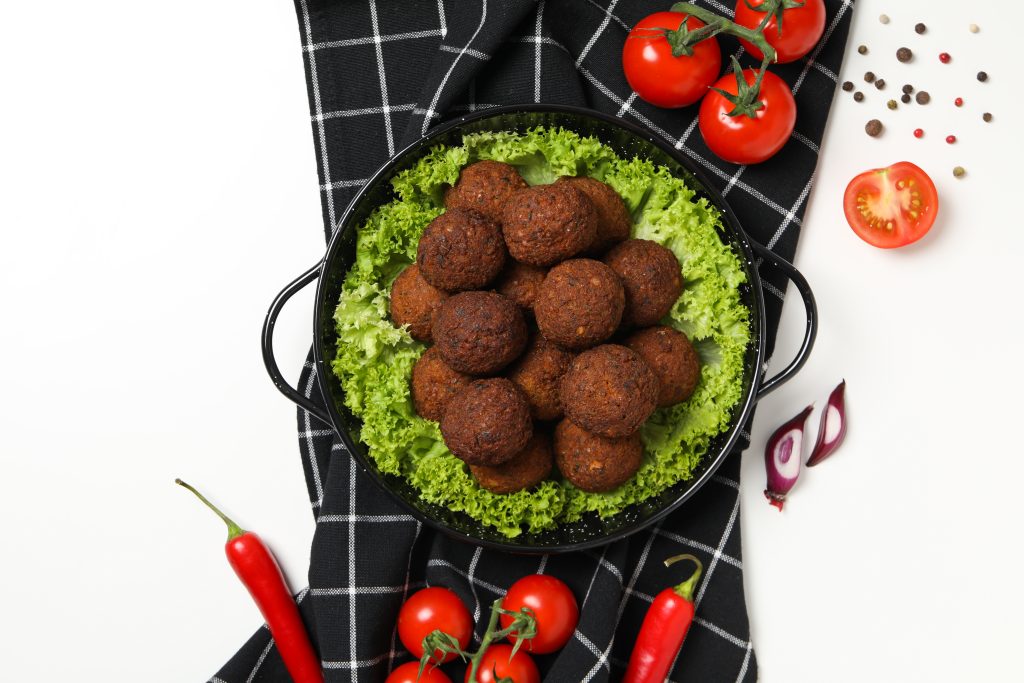Introduction:
Falafel, a timeless Middle Eastern delicacy, has captivated taste buds around the world with its crispy exterior and flavorful interior. While it’s readily available in many restaurants, there’s something truly special about crafting your own falafel at home. In this article, we’ll explore the art of making falafel your way—creating a dish that not only satisfies your taste preferences but also offers a rewarding culinary experience.
The Essence of Falafel:
Originating from the Middle East, falafel has become a global sensation, loved for its unique blend of ground chickpeas or fava beans, fresh herbs, and aromatic spices. The magic lies in the combination of ingredients and the method of preparation, resulting in a golden-brown, crunchy exterior with a tender and flavorful center.
Choosing Your Base:
The first step in creating your personalized falafel is choosing the base. Traditionally, chickpeas are used, but some recipes incorporate fava beans or a combination of both. Chickpeas lend a nutty flavor and a smoother texture, while fava beans provide a slightly earthier taste. Experimenting with different ratios allows you to tailor the texture and taste to your liking.
Spice it Up:
The spice blend is the heart and soul of falafel. While cumin and coriander are staples, feel free to play with other spices like paprika, turmeric, or even a pinch of cayenne for a subtle kick. The key is finding the right balance that suits your palate. Consider adding a dash of cinnamon or nutmeg for an unexpected twist, elevating your falafel to new heights.
Fresh Herbs, Fresh Flavor:
Fresh herbs are the secret weapons that elevate falafel from good to exceptional. Parsley is a classic choice, but cilantro or a mix of both adds a vibrant, herbaceous note. Don’t be shy to experiment with dill, mint, or even spinach for a unique flavor profile. Finely chop the herbs to ensure an even distribution throughout the mixture, infusing every bite with freshness.
The Perfect Texture:
Achieving the ideal texture is crucial for a successful falafel. A coarse grind is generally preferred, providing a satisfying bite while maintaining a tender interior. Some recipes recommend using a food processor, but for a more rustic feel, consider hand-mashing the ingredients. The key is not to over-process, preserving the granular texture that makes falafel distinct.
Mastering the Technique:
Forming the falafel into uniform patties or balls is where the artistry comes into play. Wetting your hands slightly prevents the mixture from sticking, making it easier to shape. Aim for consistency in size to ensure even cooking. For an extra crispy exterior, refrigerate the formed falafel for at least 30 minutes before frying.
Choosing Your Cooking Method:
While deep-frying is the traditional method, you can opt for a healthier alternative by baking or pan-frying. Deep-frying creates an irresistible golden crust, but shallow frying or baking yields a lighter option without sacrificing flavor. Whichever method you choose, be attentive to achieve that perfect balance of crispy exterior and moist interior.
Serving Suggestions:
Falafel is incredibly versatile, making it a fantastic addition to various dishes. Serve it in pita bread with a drizzle of tahini sauce, or atop a vibrant salad for a lighter meal. Create a mezze platter with hummus, tzatziki, and pickled vegetables for a complete Middle Eastern feast. The possibilities are endless, allowing you to tailor your falafel to complement your favorite flavors.
Conclusion:
Crafting falafel your way is not just about following a recipe; it’s a journey of exploration and self-expression in the kitchen. With the right combination of ingredients, spices, and techniques, you can create a falafel that reflects your unique taste preferences. So, roll up your sleeves, gather your ingredients, and embark on the delicious adventure of making homemade falafel that truly speaks to your culinary sensibilities.


